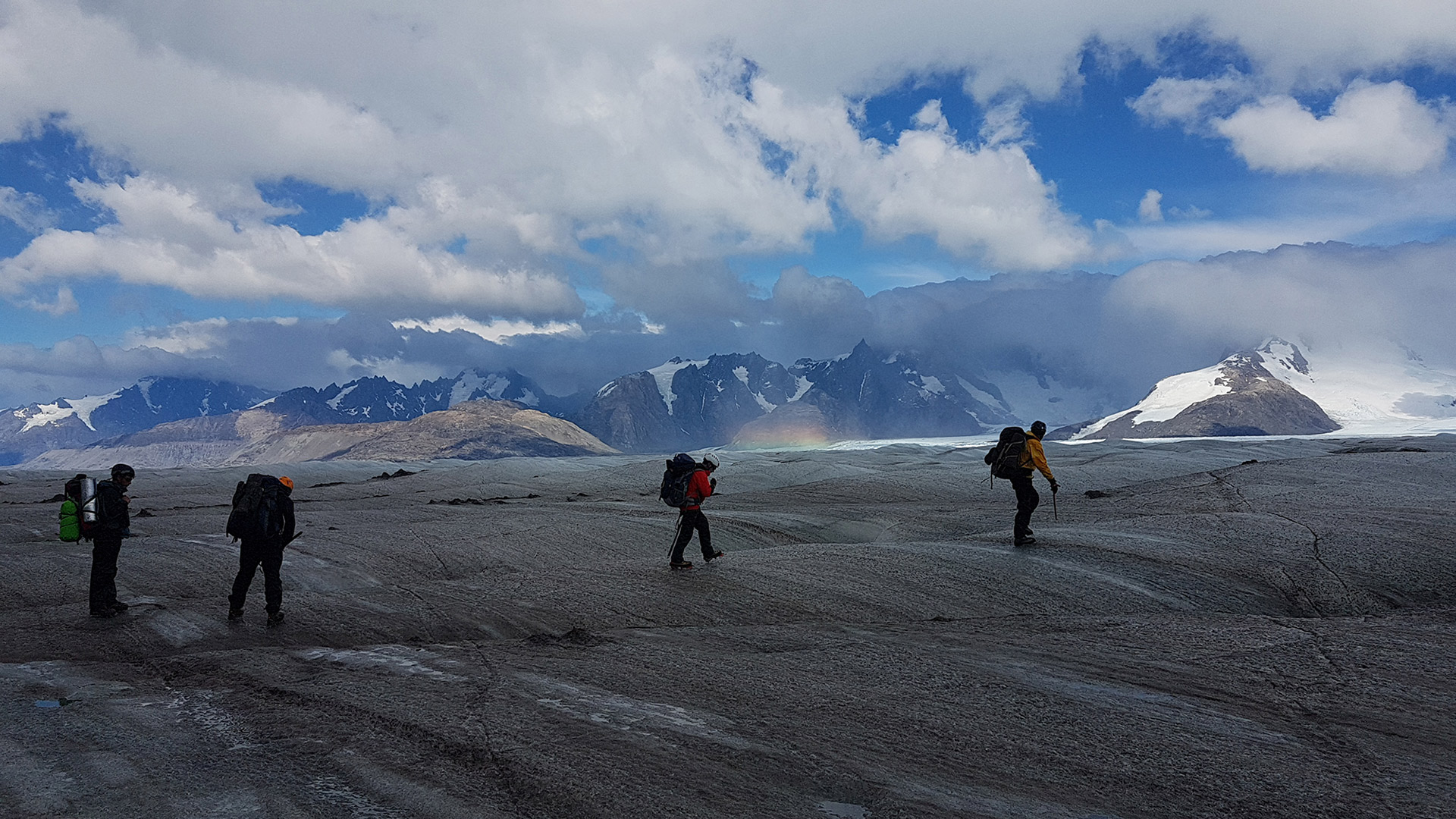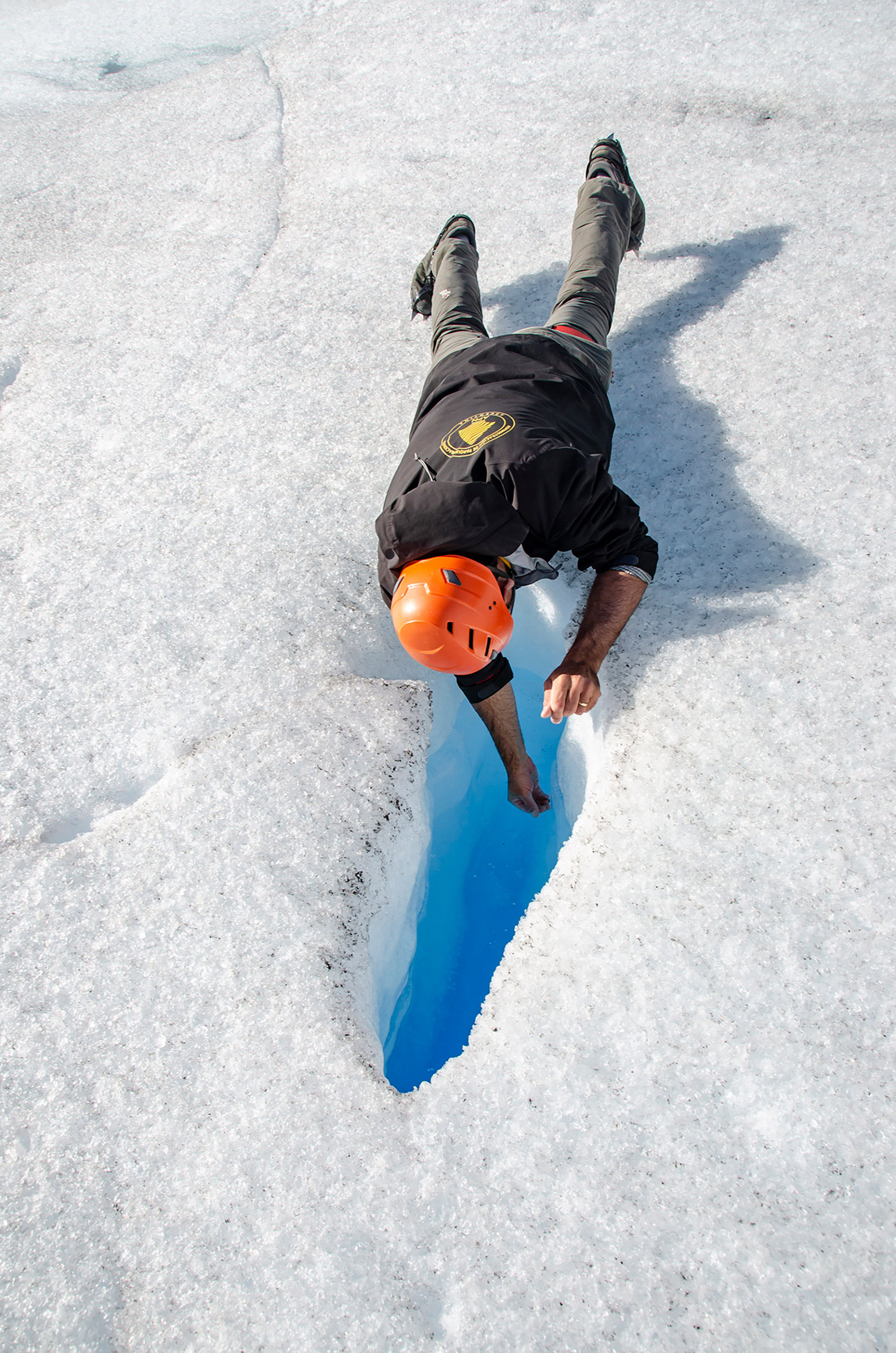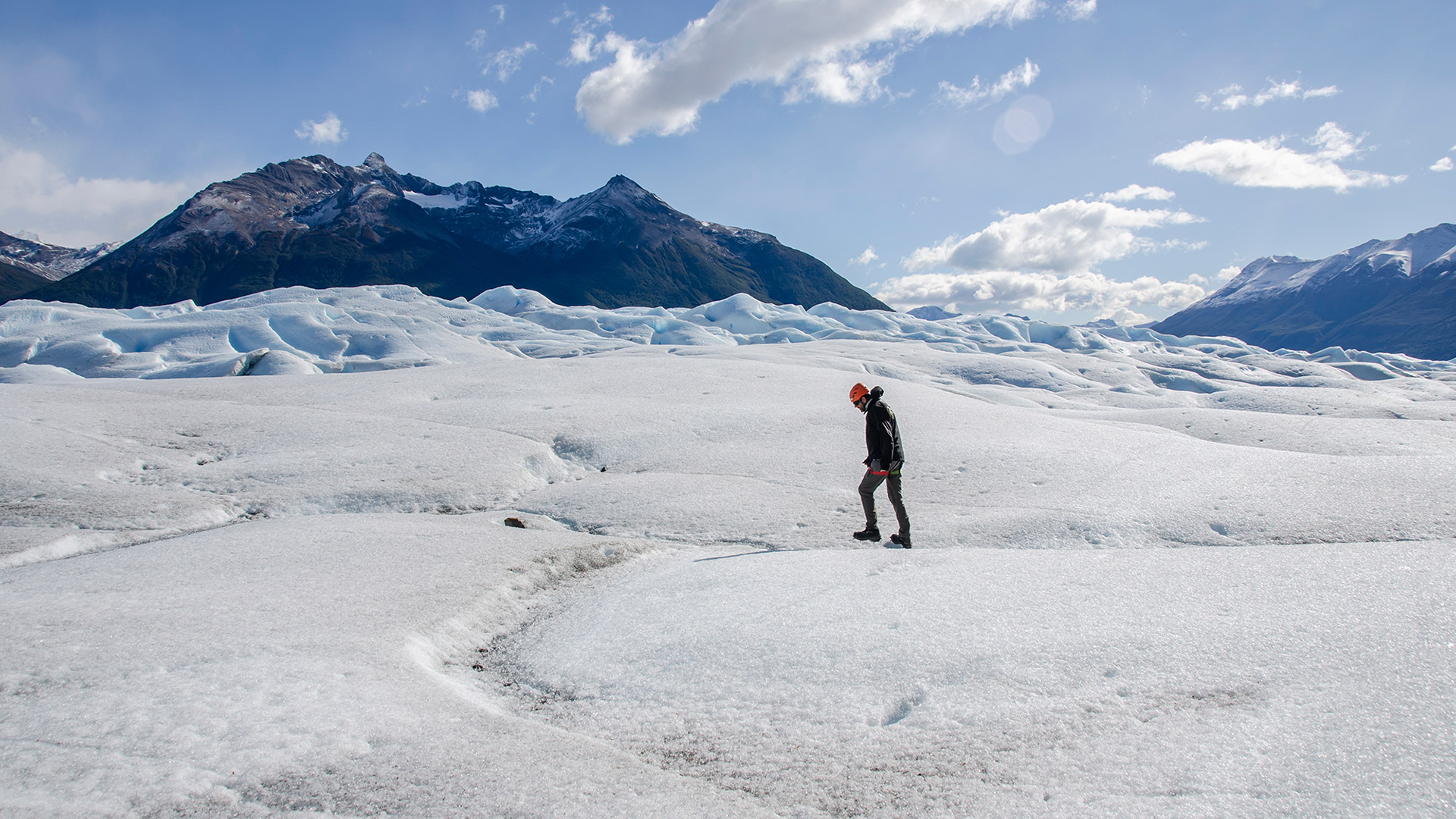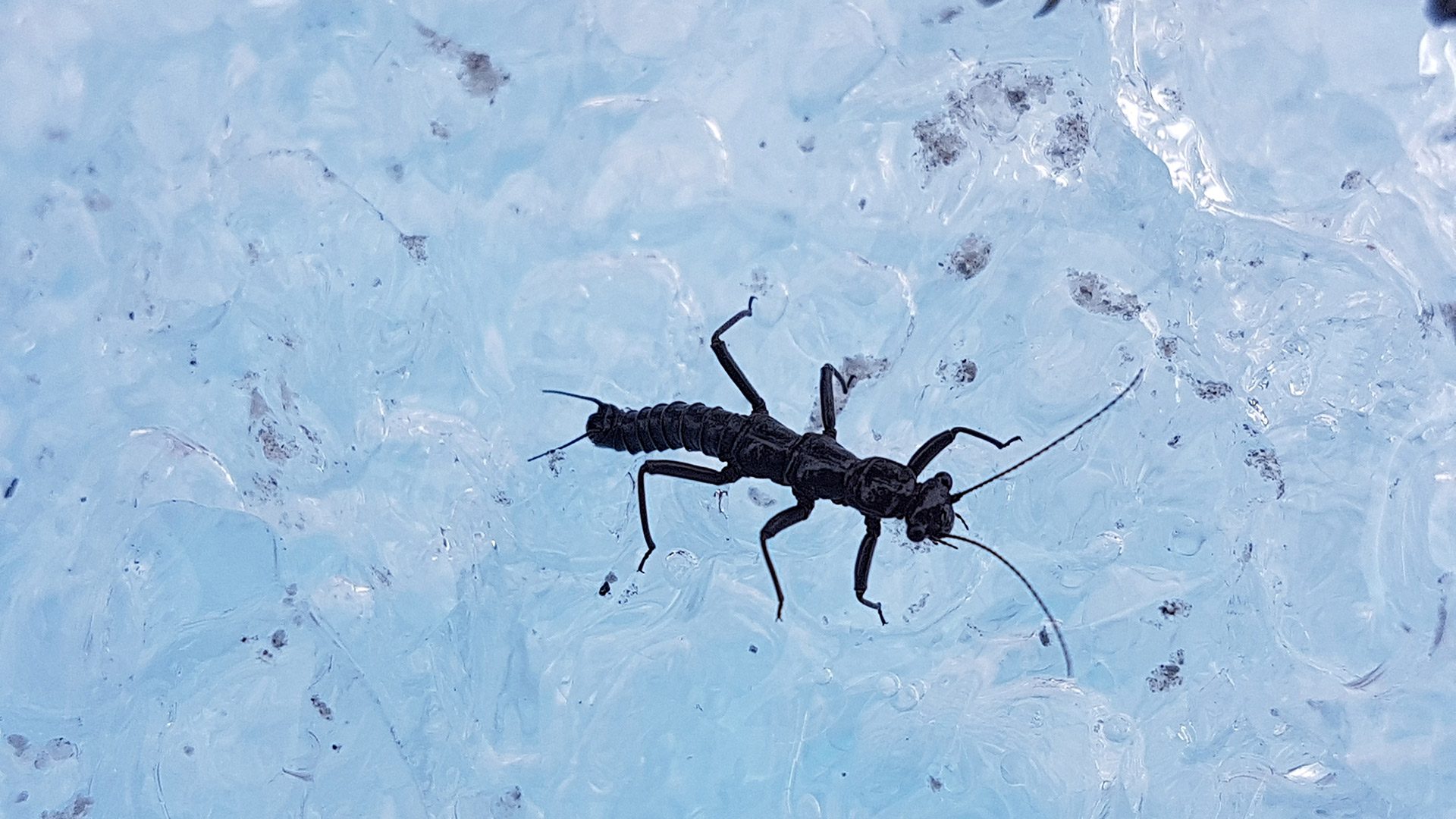:quality(85)/cloudfront-us-east-1.images.arcpublishing.com/infobae/EDKMAXDH7FFU3GG4JMYVE3LVFA.jpg 420w)
With a size that does not exceed two centimeters, the Dragon of Patagonia is born, develops, reproduces and dies on the ice of the glaciers of southern Argentina and Chile. This is the Andiperla, discovered in 1952, whose larvae live in small sinks and streams on the ice, while adults roam on the icy surface looking for a mate and food.
In 2019, they found that, on the Perito Moreno Glacier there was a species with a different aspect and, after comparing it with the original collection, they confirmed that it was a new species, which they called Andiperla morenensis, alluding to the fact that it lives on the Perito Moreno Glacier. And, last February, an expedition went in search of the insect to the Uppsala Glacier.
“We had to walk many kilometers because of the large amount of ice that Uppsala has lost. And we found several populations of Andiperla willinki, and we could also record their movements and characterize their habitat in order to begin to compare with the data that had been obtained in recent years on the Perito Moreno Glacier,” Daniel Testoni, specialist in botany at the Regional Directorate, explained to Infobae Daniel Testoni Southern Patagonia of the National Parks Administration, who was part of the research team.

“Its adaptation to low temperatures is undoubtedly the most striking thing. It was thought that he achieved this by having antifreeze in his blood; however, this could not be verified until now. It was even confirmed that the temperature tolerance range for Andiperla to live has to exceed 0 °C and up to 10 °C, below and above those extremes, individuals die,” added the expert.
Females lay their eggs in sinks or melting pools of different depths above the ice field and larvae emerge there. Nor is much known about the larval stage, but it may be several years, molting and even reaching a size of almost two centimeters. The larvae are exclusively aquatic, breathing through gills and get air from oxygen dissolved in water. Adults, who do not have wings, breathe oxygen from the atmosphere and wander on the surface of the glacier, looking for a mate and food.

Little is known about their diet, but they have been seen eating organic remains that accumulate in water pools, such as leaves and lichens and other insects that accidentally fall when flying over the glacier. “In the Perito Moreno, which is so close to the forest, there have been traces of lengas, cherries very close to the ice. In Uppsala, due to the great retraction of the glacier due to the climate crisis, the forest has been further removed. In fact, we are also studying how ice melting can influence this species,” said Testoni.
The two species of Andiperla differ by their morphology, mainly in the genitals of males, which is what these insects use to reproduce as well as differences in their genes.
“Currently, genetic studies are being carried out to understand what the evolutionary process has been like that allowed the adaptation of this species to be able to live permanently on ice without regulating its body temperature, and how is its physiology, adapted to function at that extreme temperature,” added the expert.

Not much is known about its ecosystem importance, however, the scientist indicates that studies around this species could give us new clues. “There is no evidence that the andiperla responds to the same patterns of the family it composes, the flightless plecopter, that are intolerant to pollution; although fortunately glaciers still maintain their ecosystem without pollution,” said Testoni.
In this new stage, it is planned to continue the search for this species through the ice field to the north of Los Glaciares National Park.

Both Andiperla Willinki and Andiperla morenensis were found and described based on protected populations within Los Glaciares National Park, one of the most visited places in the country for local and international tourism, but which also has a unique richness and diversity of life, as is the case with this species.
Andiperla is being studied from various aspects by a multidisciplinary team, composed of Drs. Rolando Rivera-Pomar (UNNOBA genetics specialist), Ronald Kühnlein (energy metabolism specialist at the Institute of Molecular Biosciences, Austria), Pablo Pessacq (CIEMEP-UNPSJB taxonomist)
KEEP READING
